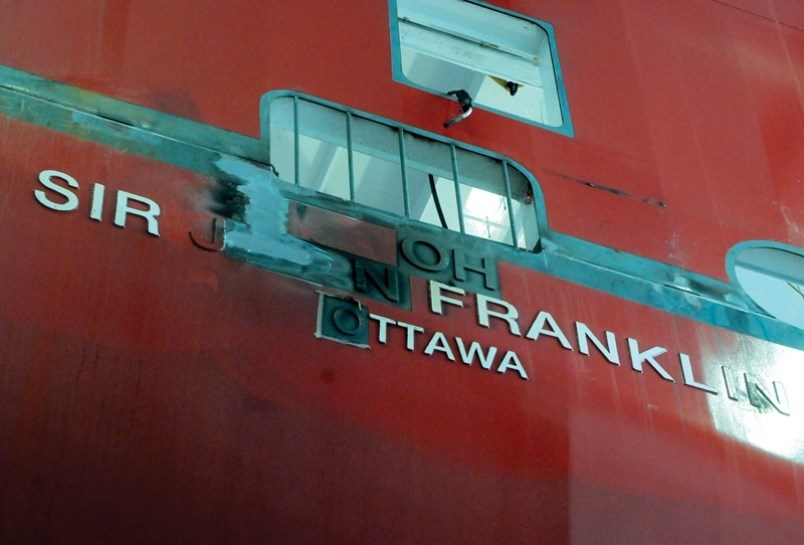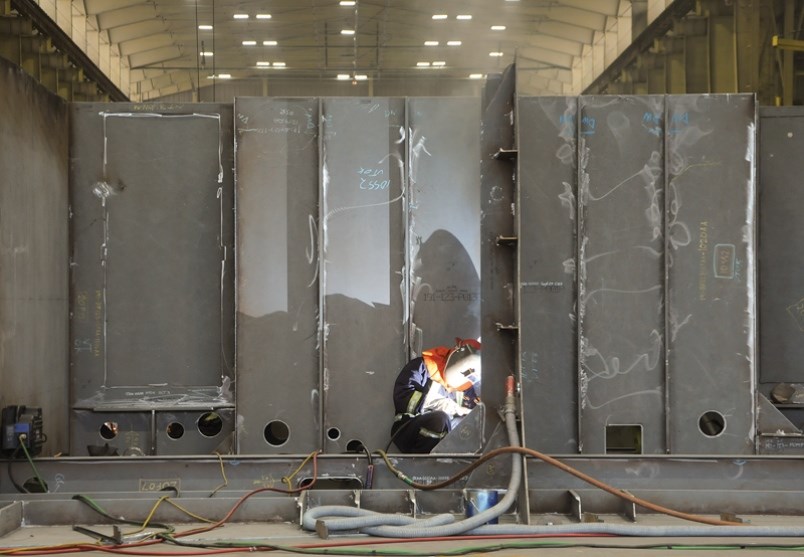The federal government revealed this week that one of the massive navy joint support ships will be built in North Vancouver’s Seaspan Shipyards right after work wraps up on the three federal fisheries vessels as part of the government’s national shipbuilding program.
The shipyard will now complete work on the first of the two support ships before building an oceanographic science vessel for the Coast Guard, which had previously been planned to follow the three fisheries vessels.
The switch puts one of the big joint support ships – the largest that will be built in the shipyard – next in line on the shipyard’s production schedule. Early work on the joint support ships is already underway at Seaspan, following Ottawa’s agreement in June to move that part of the production forward to keep workers at the shipyard busy.
Seaspan asked the federal government for changes to the work schedule a year ago, to avoid the threat of significant shipyard layoffs.
Charles Drouin, spokesman for Public Services and Procurement Canada, said the government made the change "in an effort to build on the good momentum underway" with construction already started on the first joint support ship. Drouin added the move will "mitigate the risk of potential layoffs" and allow time between construction of the first and second large joint support ships to "incorporate lessons learned."
Drouin said additional details on shipbuilding schedules will be provided in the coming months.
Design work on the offshore science vessel is taking longer than expected and changing the schedule will save money and time in the long run, Seaspan’s vice-president of government relations, Tim Page, said Wednesday.
The decision to move up construction of one joint support ship means the work force at the North Vancouver shipyard could also begin ramping up sooner.
But anyone expecting the support ship to be delivered overnight will be disappointed.
Page says the shipyard’s new schedule has it hitting the water in 2022, and it will still need to undergo testing at sea.
That isn't significantly different from the schedule announced last summer when the delivery of the first ship was anticipated at late 2022 or early 2023.
The navy has been without a permanent support ship since 2015, when it was forced to retire its existing vessels because of a fire and corrosion issues. It is currently leasing a temporary ship, the MV Asterix.
The two joint support ships are expected to cost a combined $3.4 billion.
On Wednesday, Seaspan also announced it has signed a deal with the Ottawa-based company Lockheed Martin to provide the shipboard “command management system” for the joint support ships. The $118 million contract includes controls for the shipboard weapons, data, surveillance radar and infra-red sensors and other electronic components.
The two naval support ships and Canadian Coast Guard’s oceanographic science vessel are among seven ships the government has asked Seaspan to build through a multibillion-dollar national shipbuilding plan.
But the shipyard has struggled to stay on schedule.

It is still working on three fisheries-science vessels for the Coast Guard, being built under a fixed-price contract, that were supposed to have been delivered by 2018.
Following the launch of the first federal fisheries vessel at the end of 2017, the company was forced to go back and re-weld parts of the hulls on all three ships, after defects were discovered by a member of a Coast Guard monitoring team.
Internal briefing notes for Procurement Minister Carla Qualtrough obtained through the access-to-information law indicated last year that Seaspan was facing a loss on the three fisheries vessels, which Page confirmed.
Page stressed however that Seaspan has since made several changes at the shipyard.
That has included bringing in a new management team and hiring the main engineer who designed the original German version of the support ships.
At the same time, Page said Seaspan has invested $200 million of its own money into the Vancouver shipyard and is now looking for assurances that the government will provide it more work after the first seven vessels are finished.
“We didn’t invest $200 million in order to build seven vessels, four of which are prototypes,” he said.
“We invested for the promise of 20 to 30 years of shipbuilding work, which is the principle on which the national shipbuilding strategy was founded. So we’re in this for the long-term.”



